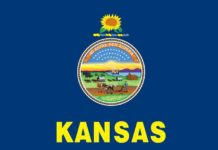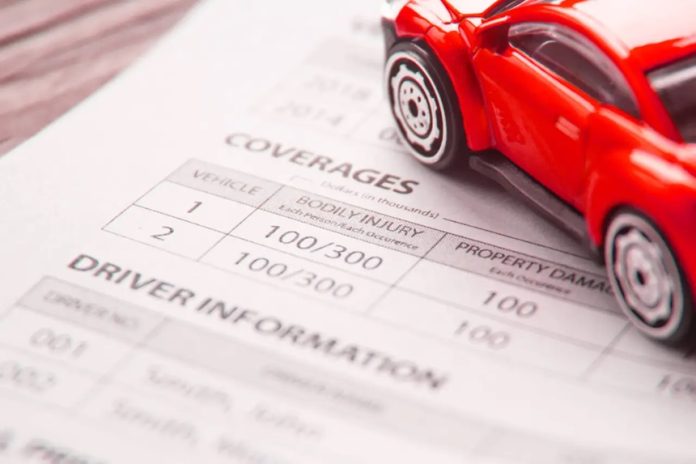(Updated to correct that 8% of Kansas motorists are estimated to be uninsured)
The Kansas Highway Patrol routinely cites drivers for failing to show proof their vehicles are insured.
Last year, troopers handed out 8,030 tickets for not showing proof of insurance, and the year before that they issued 7,811 tickets for the same offense.
While only a portion of those may not be insured, they represent thousands of Kansas drivers on the road without insurance coverage.
Heading into the upcoming legislative session, Insurance Commissioner Vicki Schmidt is proposing the state adopt real-time confirmation of insurance coverage for drivers.
Instead of confirming insurance coverage when a vehicle is registered, during a traffic stop or after a crash, the state will be quickly notified when auto insurance coverage lapses.
The state will notify drivers in real time that their insurance coverage has ended and they have 30 days to get coverage or their registration will be revoked.
It’s similar to what has been enacted in 18 other states plus Washington, D.C., including nearby Oklahoma and Arkansas.
The goal of the real-time verification system is to lower the uninsured motorist rate in Kansas, which contributes to higher auto insurance rates, officials said.
A similar system in Arkansas was credited with cutting the percentage of uninsured motorists by half.
The Insurance Department said Kansas insurers paid claims totaling more than $50 million related to uninsured motorists during calendar years 2021 and 2022.
Under Kansas law, drivers are required to carry a minimum of $25,000 in coverage for bodily injury per individual, $50,000 bodily injury per accident and $25,000 for property damage per accident in addition to underinsured and uninsured motorist coverage.
Failing to carry insurance coverage is a misdemeanor subject to a fine of $300 to $1,000 or a jail term of not more than six months.
The proposal also would give law enforcement the immediate ability to verify whether any of the state’s roughly 2 million licensed drivers have insurance coverage.
Currently, drivers are asked to produce proof of insurance when they’re stopped. The insurance card may not be accurate if the coverage was canceled.
Further, drivers who can’t provide proof of insurance must appear in court with paperwork to demonstrate coverage.
The proposal wouldn’t change state law requiring drivers to show proof of insurance.
But it would combat fraud by preventing uninsured drivers involved in a wreck to quickly go out and buy insurance after the crash and then file a claim.
“Every day, each of us share the road with individuals who drive without any form of car insurance,” Schmidt said in a statement.
“Not only is this illegal and financially irresponsible, but uninsured motorists drive up the cost of car insurance for all law-abiding Kansans,” she said.
“The department has an opportunity to bring insurance verification into the 21st century and give law enforcement and other stakeholders a better tool to help them protect Kansans,” she said.
The real-time verification system also could be accessed by authorized members of the judiciary, the Department of Revenue and the Department of Insurance.
The Insurance Department is committed to paying for the system, which could cost somewhere between $300,000 and $1.5 million a year depending on the vendor and the type of system that’s developed.
The department already has more than $70 million in unspent funds in reserve.
The Department of Revenue, which oversees vehicle registration and driver’s licensing in Kansas, declined to comment on Schmidt’s proposal.
Nationally, 14% of motorists, or about one in seven drivers, were uninsured, according to a 2023 study by the Insurance Research Council.
The latest data available from 2022 showed that about 8% of roughly 2 million Kansas divers were uninsured, ranking the state 44th nationally.
The states with the highest percentage of uninsured drivers was New Mexico at 24.9% and Mississippi at 22.2%, according to the Insurance Research Council report.
Wyoming (5.9%), Maine (6.2%) and Idaho (6.2%) were the three states with the lowest
percentage of uninsured motorists in 2022, the IRC report said
In Arkansas, officials adopted an online insurance verification system that started in January 2020.
At the time, the uninsured rate for registered vehicles was approximately 16%, officials said.
Last year, the state announced that it had been reduced to about 8%.
A key component of the Arkansas system is a notice any time insurance expires or is canceled.
A letter is automatically generated informing the vehicle’s owner what will take place if insurance is not obtained.
They’re informed the penalties they face if the vehicle is not covered, such as a $100 fine and cancellation of the registration.
Fines levied by Arkansas Department of Finance and Administration have generated more than $10 million since 2020, officials said.
Todd Feltman, chair of the Insurance Industry Committee on Motor Vehicle Administration, said there are limitations to the system.
For example, a system for checking insurance in Kansas would not necessarily be able to check whether drivers from out of state such as Missouri were insured.
Feltman said the insurance companies can’t send insurance information about drivers from Missouri and others states to Kansas because of state and federal privacy laws.
“Insurance companies are only going to share the information based on where the policy is issued,” Feltman said.
Those out-of-state drivers would still be required under state law to show proof of insurance if requested by law enforcement.
Feltman also said another limit could be data mismatches.
He said the data kept by the insurance company may not always match what’s kept on file by the state, leading to law enforcement not being able to immediately determine whether the vehicle is insured.
“Generally, if that mismatches it’s more so on the insurance company’s side just because you have more hands entering the data,” he said.
Feltman added that some vendors who operate systems on behalf of the state have created their own proprietary matching criteria that flags mismatches between information kept by the state and the insurance company.
Klumpp, who has served on a couple of task forces that have studied real-time insurance verification, said the system works primary by comparing vehicle identification numbers to insurance policy numbers.
“I think the chances of mismatching would be slim,” he said.
“I don’t think you would want to take away…the ability of a person to later demonstrate that they had insurance and it didn’t show up,” he said.
In Arkansas, officials adopted an online insurance verification system that started in January 2020.
At the time, the uninsured rate for registered vehicles was approximately 16%, officials said.
Last year, the state announced that it had been reduced to about 8%.
A key component of the Arkansas system is a notice any time insurance expires or is canceled.
A letter is automatically generated informing the vehicle’s owner what will take place if insurance is not obtained.
They’re informed the penalties they face if the vehicle is not covered, such as a $100 fine and cancellation of the registration.
Fines levied by Arkansas Department of Finance and Administration have generated more than $10 million since 2020, officials said.
Republican state Rep. Bill Sutton, chair of the House Insurance Committee, said he wants to make sure that any insurance information is protected from identity theft.
“If it works the way the brochure reads, that’s pretty cool,” he said. “That would be really beneficial, I think, to Kansas.”















